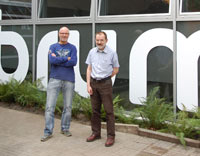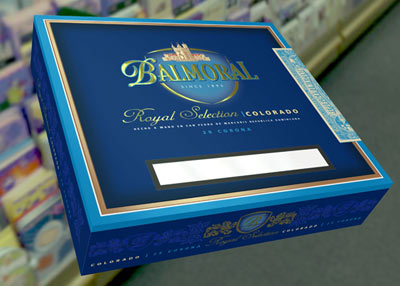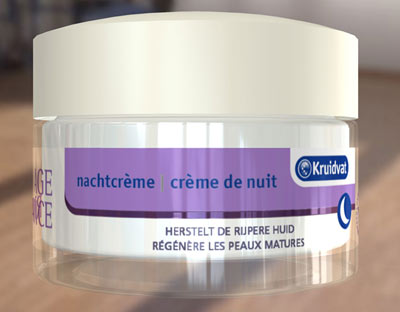BRUM Design adds efficiency to creativity with Esko Studio
BRUM Design adds efficiency to creativity with Esko Studio
Customer: BRUM Design
BRUM Design is a Dutch packaging design company that found the perfect balance between sketching concepts by hand and turning them into beautiful packaging on the Mac. They use Esko Studio to test, improve and visualize their designs – in 3D.
The Challenge:
Ongoing product improvement requires BRUM Design to combine creativity with efficiency. BRUM needed a solution that enables them to visualize all kinds of high-end product finishing without the need for expensive models or dummies of the packaging.
The Solution:
Studio: 3D design tools for packaging pros
The Benefits:
Quote
Studio has enabled us to stay ahead of the competition. The software enables us to continue to focus on creating innovative packaging design. We can go from sketching to a working design solution very efficiently and cost effectively. By differentiating ourselves in a very professional way from competitors, we are able claim a stronger position in the market and that will allow us to continue to grow our portfolio and revenue.
Willem van Roozendaal, General Manager Brum
BRUM Design is a Dutch packaging design company that found the perfect balance between sketching concepts by hand and turning them into beautiful packaging on the Mac. They use Esko Studio to test, improve and visualize their designs – in 3D: “This specialist software allows us to be even more creative, in ways that were impossible before.”
Founded in 1974, BRUM Design has always remained true to its roots. General Manager Willem van Roozendaal explains how this has helped the company to differentiate itself as a specialist: “We’ve stuck to packaging design because we are really good at it. Many other design agencies have broadened their services, but we wanted to stay focused on creative packaging.”
From sketch to 3D visualization
“Our design always starts with a free flow of ideas, without worrying about computer technology or software considerations. Once we have explored all possibilities with our client, we use Esko’s Studio to visualize the design in 3D. The software allows us to quickly try out different versions make our designs a reality.”
Visual brainstorm
A team of specialists is assigned to each project. After the client’s briefing, the team kicks off with a ‘visual brainstorm’, says Van Roozendaal: “We sketch by hand in black and white, and come up with around 20 or 30 ideas. We don’t use the computer at this stage, as creative ideas wouldn’t flow as freely. Sketching is a really fast and easy way to get good ideas on paper.”
Responding to trends
Most projects involve upgrading, re-branding or re-launching a product. As products and brands evolve, the packaging does too, says Van Roozendaal: “On average, a packaging design will be changed after three years."
“However, the issues that shape the industry aren’t just technical and aesthetic ones. They’re also about consumer perception and emotion. Today, for example, there is a strong desire for packaging that uses eco-friendly materials and minimizes the carbon footprint.”
Visualizing with Studio Visualizer
Ongoing product improvement requires BRUM Design to combine creativity with efficiency. Van Roozendaal explains: “That’s why we started using Studio Visualizer four years ago. The software enables us to visualize all kinds of high-end product finishing without the need for expensive models or dummies of the box, bag or bottle.”
“We can create very realistic simulations of a matt and gloss varnish, gold and silver, embossing and die cuts. And we can improve our design really fast by trying out different ideas and switching between versions. The Visualizer software adds another layer of creativity to our design, and simultaneously saves us a lot of time and money.”
Perfect simulation for error free packaging
Albert Klein Wassink, traffic manager at BRUM Design, emphasizes the importance of a perfect simulation by Visualizer: “You need to know that your design will perfectly fit the shape of the end product, particularly when you are designing flexible packaging, like flowpacks or standing pouches. You don’t want the product name to become wrinkled or the logo to disappear behind a fold – and only find out after you’ve paid for the printing.”
Studio Designer and Toolkits
BRUM Design uses the full Esko Studio bundle. The Designer Module is at the heart of this solution, and enables designers to preview their artwork in 3D. The specialist toolkits for boxes, labels, flexibles or shrink sleeves allow them to create the perfect design for any kind of packaging. Each Toolkit has a large database of pre-defined solutions, which can be customized to match the requested dimensions.
Creativity and efficiency
After the artwork is completed, the Visualizer Module adds any special effect in printing or finishing to the 3D preview of the final design: “These 3D simulations are not only used by our designers, they’re also shown to our clients,” says Van Roozendaal. “This saves a lot of time and money – instead of having to produce a model and take it to the customer, we now just send them the files over the internet and can even show them different versions of the design.”
Wassink adds: “We used to employ a dedicated person to make ten dummies per week. Now we do 25 visualizations. Our clients have quickly become accustomed to the 3D previews.”
Stay ahead of the competition
Van Roozendaal concludes: “Studio has enabled us to stay ahead of the competition. The software enables us to continue to focus on creating innovative packaging design. We can go from sketching to a working design solution very efficiently and cost effectively. By differentiating ourselves in a very professional way from competitors, we are able claim a stronger position in the market and that will allow us to continue to grow our portfolio and revenue.”
Longstanding relationships
- Royal Agio Cigars, a Dutch cigarmaker with a history of over 100 years and producing about 750 million cigars every year, is one of the leading cigar manufacturers in Europe offering brands such as Mehari’s, Panter and Balmoral, exporting to over 100 countries worldwide.
- Bolletje, a Dutch industrial bakery (since 1876), now employing more then 500 people distributed over three bakeries in Almelo, Heerde and Amsterdam, producing over sixty different products assorted over six segment and famous for its rusk, crispbakes and gingerbread cookies.
- And Kruidvat, a subsidiary of AS Watson with almost 1,000 drugstores in the Netherlands and Belgium, that carries over 2,500 private-label articles.
“It takes a special kind of clients to understand and appreciate our approach to design. In many cases, we are involved with product developments already at a very early stage. You need to have a very close relationship with your clients to build that kind of trust.” Klein Wassink adds: “By sharing a common history, we are able to better understand and anticipate what a client wants and expects.”



